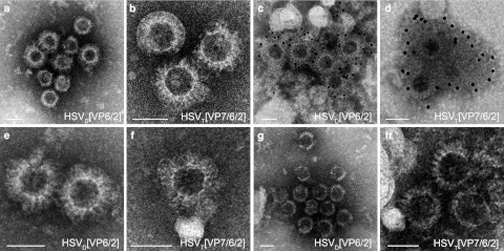HSV-1 amplicon vectors
Our research group has pioneered in the development and application of HSV-1-based amplicon vectors for gene therapy. For example, we have used HSV-1 amplicon vectors for post-transcriptional silencing of epidermal growth factor receptor, which substantially reduced the growth capabilities of tumor cells in a mouse model. More recently, we have developed an HSV-1 amplicon vector that co-expresses the structural proteins of heterologous viruses such as rotavirus and foot-and-mouth disease virus. These vectors supported the efficient assembly of virus-like particles in the vector infected cells and induced strong immune responses directed against the heterologous viruses.
Funding: Julius Müller Foundation, Cancer League Cantone Zurich, NIH, EU 6th FW
Rotavirus structural protein VP7 is localized at the ER. Immunofluorescence of Vero 2-2 cells infected with amplicon vectors expressing the rotavirus VP7 gene, forming the outer capsid shell of the virion.
a. DAPI stain b. EGFP expression c. VP7 detected wtih anti-rotavirus serum d. ConA staining of the ER e. merge of a to d.
Electron micrographs of herpes simplex virus type 1 (HSV-1) amplicon vector encoded rotavirus-like particles (RVLPs). Purified RVLPs from Vero 2-2 cells (a–d), HeLa cells (e,f), and Hek293 cells (g,h) infected with HSV-1 amplicon vectors. Negative staining. Bars = 50 nm.

